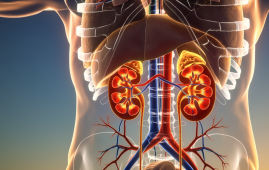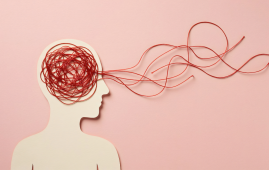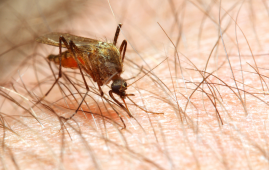

Neuroscientists have been studying how learning helps people to adapt to new behaviors and quickly adjust to a variety of conditions and problems in the real world for many years. The neuronal circuits and the connections between them in the brains of mammals, including humans, are known to reorganize as they learn new behaviors.
According to research, distinct inhibitory interneuron subgroups can influence learning in different ways. However, it is still unclear how specifically these genetically specified types of interneurons contribute.
Researchers from the Max Planck Florida Institute for Neuroscience and the Johns Hopkins University School of Medicine investigated how chandelier cells (ChCs), a subset of interneurons, facilitate the robust and adaptable acquisition of new behaviors.
Their study, which was published in Nature Neuroscience, revealed a network of interconnections in the brain called an adaptive inhibitory pattern that helps to reorganize cortical circuits during learning.
“It is well known that inhibition plays a critical role in shaping learning-dependent circuit changes,” Hyungbae Kwon, one of the researchers who carried out the study, told Medical Xpress.
“The core function of interneurons is generally known to provide inhibitory tones in network. For example, when interneurons fire, overall network excitability is reduced, and synaptic plasticity induction at excitatory synapses become difficult. However, just defining interneuron functions as a uniform inhibition is overly simplified, and it is presumed that their roles are much more specialized when considering a high diversity of subtypes,” Kwon added.
In their recent study, Kwon and his colleagues targeted ChCs, also known as axo-axonic cells, a type of genetically specialized GABAergic interneurons found in the outer layer of the brain (i.e., cortex). Their objective was to unveil the specific role of these interneurons in performing cortical computations, by performing a series of experiments on live mice that were learning to navigate a maze, using transgenic techniques.
“Our analyses employed in vivo calcium imaging during a spatial navigation task,” Kwon said. “We analyzed a population vector code from a sparse ensemble of direction-tuned premotor neurons. Functions of chandelier cells during the navigation were determined by selectively manipulating chandelier cell activity. Systematic analysis of chandelier cell axonal boutons on the axon initial segment was then performed via antibody staining.”
The results of the researchers’ studies and analyses were really intriguing. The scientists discovered that rather than limiting the activity of these neurons as a whole, ChCs aided the fine-tuning and reorganization of cortical circuits by specifically inhibiting control over particular pyramidal neurons.
“Our results demonstrate an adaptive logic of the inhibitory circuit motif responsible for organizing distributed cortical computations,” Kwon said. “Thus, chandelier cells permit efficient cortical computation in a target cell specific manner, which highlights the significance of interneuron diversity.”
Kwon and his colleagues’ most recent research yielded important new information regarding the distinctive contributions of genetically specified ChCs to the adaptive learning of new behaviors. It might open the door for future studies concentrating on ChCs or other interneuron subgroups, possibly yielding fascinating new findings.
“We will now continue to perform system-level and molecular approaches to comprehensively elucidate the multiscale mechanisms by which ChCs shape cortical circuit motifs, which includes the quantification of the correlative functional connectivity at single synapse level,” Kwon added.
more recommended stories
 Sterilized Fermented Beverage for Obesity: New Evidence
Sterilized Fermented Beverage for Obesity: New EvidenceEarly Insights Into a Sterilized Fermented.
 36-Week Pre-eclampsia Screening May Reduce Term Risk
36-Week Pre-eclampsia Screening May Reduce Term RiskA New Preventive Strategy for Term.
 Cardiovascular Risk and Sudden Cardiac Death in Diabetes
Cardiovascular Risk and Sudden Cardiac Death in DiabetesRising Sudden Cardiac Death (SCD) Risk.
 Poor Kidney Function and Alzheimer’s Biomarkers Explained
Poor Kidney Function and Alzheimer’s Biomarkers ExplainedPoor kidney function may influence levels.
 Perinatal Mental Health Challenges Highlighted in New Study
Perinatal Mental Health Challenges Highlighted in New StudyMental Health Challenges in New Parents:.
 Walking Speed Before Hip Replacement Predicts Recovery
Walking Speed Before Hip Replacement Predicts RecoveryNew Evidence Points to a Simple,.
 Neuroblastoma Drug Combo Extends Survival in Models
Neuroblastoma Drug Combo Extends Survival in ModelsA Promising Shift in High-Risk Neuroblastoma.
 How Soybean Oil Impacts Weight Gain and Metabolism
How Soybean Oil Impacts Weight Gain and MetabolismWhy Soybean Oil May Affect Metabolism.
 New Malaria Prevention Insights From African Biostatistics
New Malaria Prevention Insights From African BiostatisticsHow New Data Is Reframing Malaria.
 Coffee and Cognitive Function: Evidence Review
Coffee and Cognitive Function: Evidence ReviewA new narrative review in Cureus.

Leave a Comment